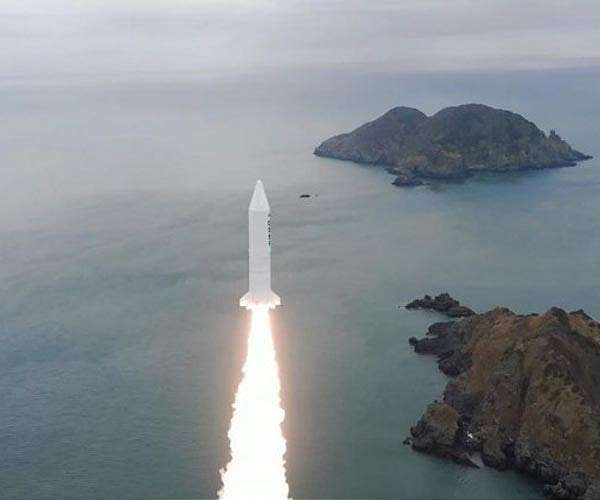
South Korea tests first solid-fuel rocket in wake of North Korea ICBM launch (Image Credit: Space war)
South Korea successfully tested its first home-produced solid fuel rocket Wednesday, the country’s military said, in a boost to its space-based defense capabilities just days after North Korea test-launched an intercontinental ballistic missile.
The South Korean rocket was fired from a site in Taean, about 93 miles southwest of Seoul, the defense ministry said in a statement. Accompanying photos showed it launching a test payload into space.
In the future, the rocket will be used to place a small satellite into low Earth orbit for surveillance operations, the ministry said.
The successful launch of the test vehicle marked an “important milestone” in strengthening South Korea’s space-based surveillance and reconnaissance capabilities, the ministry added.
South Korea has no military satellites of its own in orbit and relies on satellite images provided by the United States.
Seoul had been prohibited from developing solid fuel under a 1979 agreement with the United States that limited South Korean missile and rocket activities over concerns of an arms race in the region.
In 2020, the countries agreed to new guidelines that allowed South Korea to use solid fuels for space launch vehicles. Last May, U.S. officials agreed to lift all remaining restrictions on missile development.
Wednesday’s rocket launch comes “at a very critical time in which North Korea recently ended its moratorium and launched an ICBM,” the defense ministry said.
Last week, North Korea fired its first ICBM since 2017, sending it into the sea less than 100 miles from the coast of Japan.
Pyongyang claimed that the missile was its new Hwasong-17, which analysts believe may be capable of carrying multiple nuclear warheads, but South Korean defense officials said that North Korea actually launched the older Hwasong-15.
While North Korea has stayed in the spotlight with a flurry of weapons tests since the beginning of the year, South Korea has shown off military hardware of its own over recent months, including a submarine-launched ballistic missile and a supersonic cruise missile.
South Korea’s military responded to North Korea’s ICBM launch last week with a live-fire drill of missiles from the ground, sea and air in a demonstration of what it called its “ability and willingness to respond immediately.”
Solid-fuel rockets are less expensive to develop and manufacture than liquid-propellant rockets and can be launched more quickly, the defense ministry said Wednesday.
“Space is a key domain that has a significant impact on national security, and we will expand space defense capabilities, including solid-fuel space launch vehicles, at an early date,” it noted.
Source: United Press International
Related Links
Military Space News
Rocket Science News at Space-Travel.Com
|
|
Tweet |
|
|
|
We need your help. The SpaceDaily news network continues to grow but revenues have never been harder to maintain. With the rise of Ad Blockers, and Facebook – our traditional revenue sources via quality network advertising continues to decline. And unlike so many other news sites, we don’t have a paywall – with those annoying usernames and passwords. Our news coverage takes time and effort to publish 365 days a year. If you find our news sites informative and useful then please consider becoming a regular supporter or for now make a one off contribution. |
||
|
SpaceDaily Monthly Supporter $5+ Billed Monthly |
SpaceDaily Contributor $5 Billed Once credit card or paypal |
|
AFRL AFOSR conduct successful hypersonics rocket launch at Wallops
Wright-Patterson AFB OH (SPX) Mar 25, 2022
The BOLT II “In memory of Mike Holden” flight experiment, managed by the Air Force Research Laboratory/Air Force Office of Scientific Research (AFRL/AFOSR), launched on the evening of March 21 from the National Aeronautics and Space Administration’s (NASA) Wallops Flight Facility in Virginia. Dr. Michael Holden, who, up until his passing in 2019, had been a leader in the hypersonics field since the 1960s. The flight experiment successfully flew the planned flight path and acquired tremendous scientific … read more









